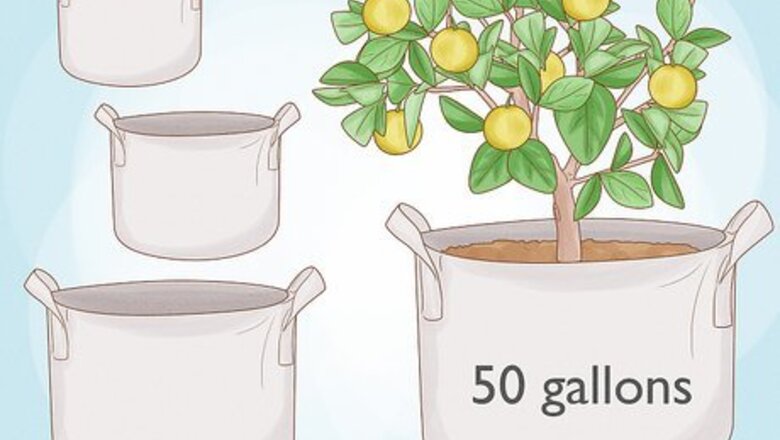
views
- Line the growing bag with 1 in (2.5 cm) of clay pebbles for drainage. Then add 2 in (5 cm) of equal parts of moss, compost, and vermiculite.
- Shake the bag to settle the soil. Then, use a pair of scissors to snip small holes around the bottom of the bag for drainage, with each hole 0.5 in (1.3 cm) apart.
- Dig a hole in the bag's soil the size of your shallow-rooted plant's root ball. Place the root ball in the hole, then pat the soil firm around it. Water it until the soil is damp.
Getting Your Grow Bag Ready
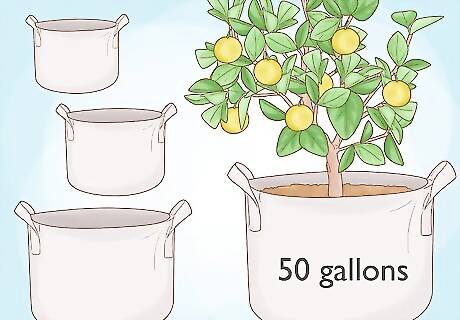
Purchase your growing bag. You can purchase a growing bag at a nursery or home improvement store. You can choose a plastic or fabric growing bag, but fabric growing bags often need to be watered more than plastic bags. Choose the bag according to the size of the roots. Don’t buy a very large bag unless you are going to plant something large. For example, you would need a 50-gallon bag if you’re planting something as large as a grapefruit tree.
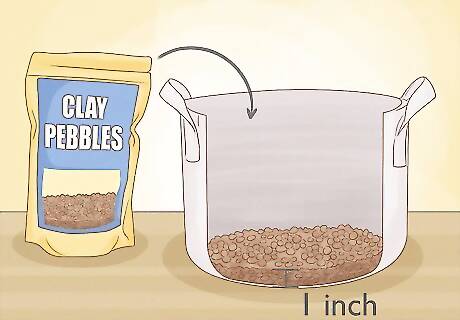
Line the grow bag with clay pebbles to aid drainage. If the type of potting mix you’re using isn’t susceptible to drainage, you may need to line the bottom of your grow bag. You can line the bag with clay pebbles or chunky perlite. Put enough of the pebbles or perlite at the bottom of the bag to cover it completely. Use at least 1 inch (2.5 cm) of pebbles or perlite in the bag.
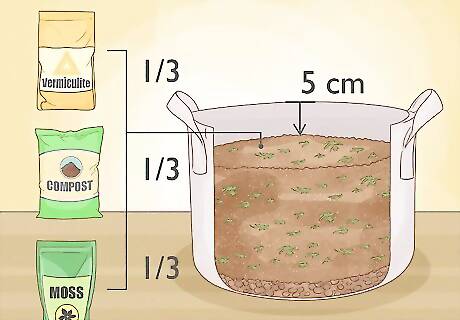
Add soil to the grow bag. You can use a compost-like gardening soil, a compost made specifically for containers, or you can make your own mix. A mix that is ideal for growing bags is 1/3 moss, 1/3 compost mixture (like chicken manure or mushroom compost), and 1/3 vermiculite (a moisture-retentive mineral). Fill the growing bag up almost all the way, leaving a couple of inches (5 cm) of space at the top of the bag.
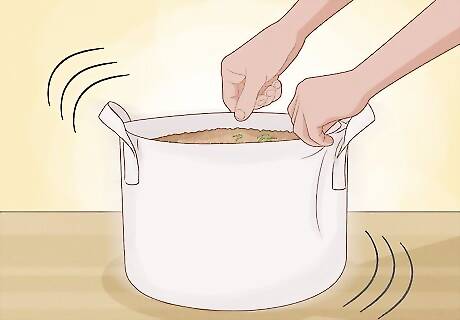
Loosen and shape the bag if it doesn't have any already. Once the soil is in the bag, shake it a bit and knead it as if it were a pillow to loosen it up. Then, shape the bag into a low hummock (hill-like shape). This is to ensure that the soil has been evenly spread.
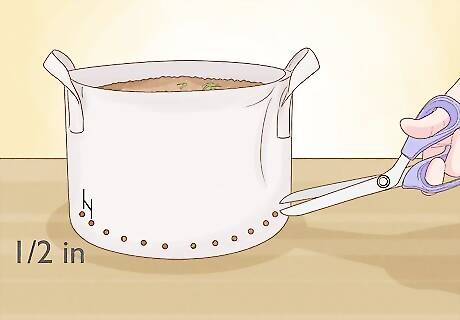
Pierce drainage holes in the bag if it doesn't have any. Pierce the bottom of the bag with scissors. The holes should be the size of the hole punctured by the scissors, and they should be about half an inch (1.3 cm) apart. The holes are only meant to release excess moisture. If your bag already has drainage holes, you can skip this step.
Adding Plants
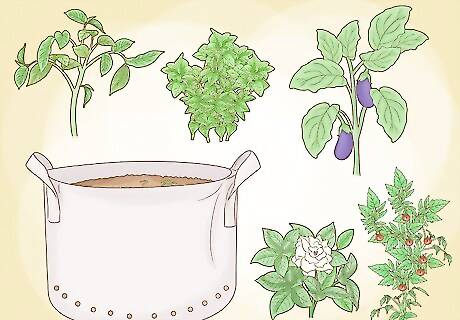
Choose plants with shallow roots for best results. Shallow-rooted plants are ideal in the bag because they will not be stunted by the bottom of the bag. Good choices include tomatoes, peppers (capsicum), eggplants, zucchini, cucumbers, marrow, strawberries, French beans, lettuce, potatoes, herbs, and flowers. You can, however, grow larger items, like trees, if you have purchased a very large growing bag.
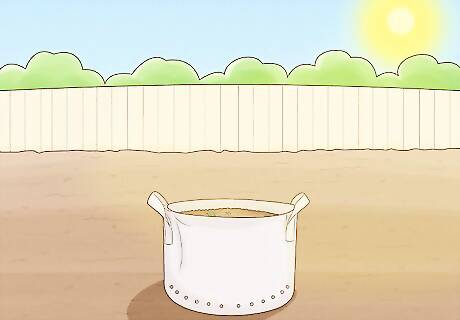
Position the bag where you will grow your plants. Growing bags are easy to move and can be placed in a variety of locations. They can be put on a balcony, outside in a garden, or in a greenhouse. Consider the amount of sunlight and warmth your plants will need when choosing the location.
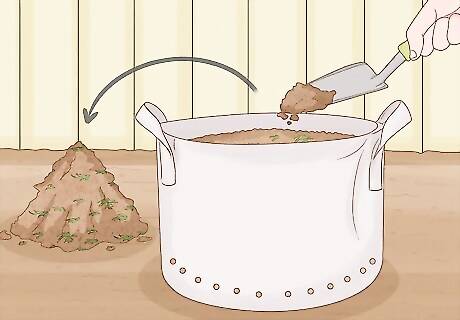
Scoop out soil to make room for the plants. Scoop out the soil with your hands or a trowel. Make sure that you’ve scooped out enough soil so that the entire root of the plant can be covered once it has been planted.

Install the root ball in the soil. Insert the root ball into the placed where the soil has been scooped out. Make sure that the entire root ball is covered in the soil. Then, cover the top of the root ball with some of the soil you’ve dug out.
Caring for the Plants

Water the bag often. Grow bags typically require more water than potted plants. Check the growing bags on a daily basis. Water the soil anytime you see that it is drying out. The plastic heats the peat mix up considerably, so keeping the soil moist is essential for the growing plants to succeed. Fabric bags usually need to be watered more often than plastic bags.

Install a self-watering system. It can be difficult to keep a growing bag well-watered, so a self-watering system is often beneficial. One option is to install a drip system. Essentially, a drip system is where a container slowly and consistently releases water into the soil. Or, you can put a container underneath the growing bag and fill it with water. If you put a deep container under the growing bag, you may need a container to catch the overflow.
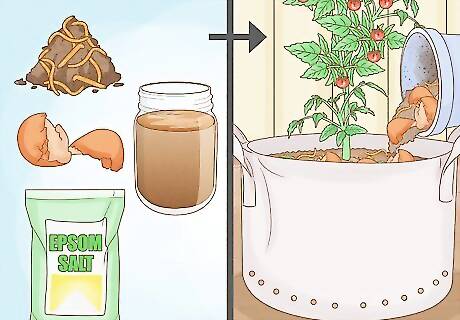
Fertilize heavy feeder plants. Heavy feeder plants are plants such as corn, tomatoes, and cabbage family crops. You can buy a fertilizer or make your own natural fertilizer. You can make your own fertilizer out of Epsom salt and eggshells, worm castings, and compost tea. Spread a thin layer of fertilizer on top of the soil. There should be room if you left a couple of inches (5 cm) at the top of your bag. Fertilize your plants at least once a week.
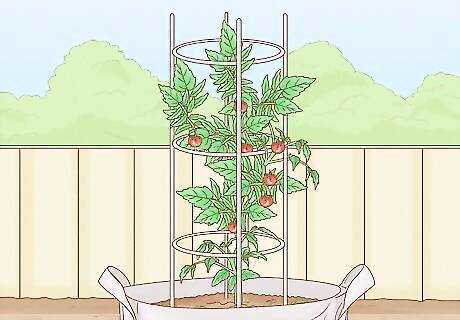
Prop up tall plants as needed. You will likely need to add support to tall or top-heavy plants. You can use cane sticks to do this. Insert a cane stick into the soil next to the plant. Then, tie the plant to the cane, and attach the cane stick to a frame.
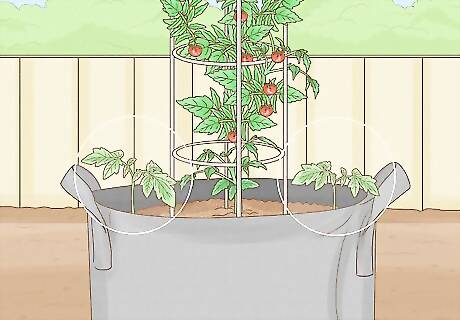
Plant smaller plants under tall plants to make the most of limited space. When space is a premium and gardening in this way is the only opportunity you have to grow your own vegetables, you can increase the crop by under-planting. For example, if you are growing tomatoes, add some lettuce or radishes underneath the tomatoes. Just be sure to wait until the tomatoes are well grown before planting the under-plants. If you plant more than one plant in the same bag, make sure you water them thoroughly.
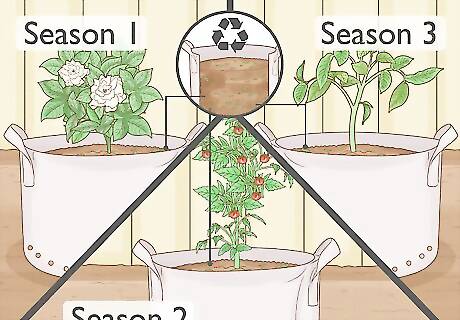
Reuse the soil when the crops are finished. If the soil still seems healthy, you will be able to reuse the soil next season. The soil can be kept and reused for up to 2 to 3 seasons, as long as you amend the soil with compost, organic matter, or fertilizer. Even the bag can be used for one more season if you wash it out, allow it to dry, and then store it in a dry place until next growing season.











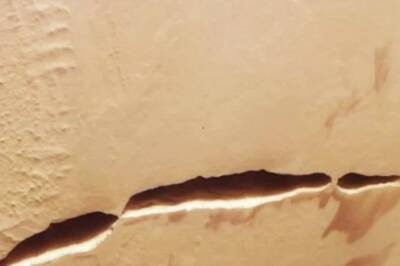


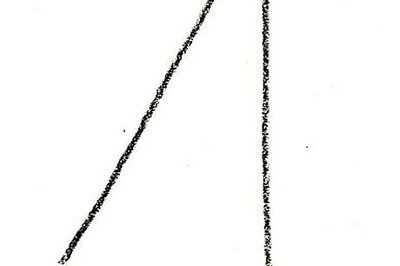



Comments
0 comment